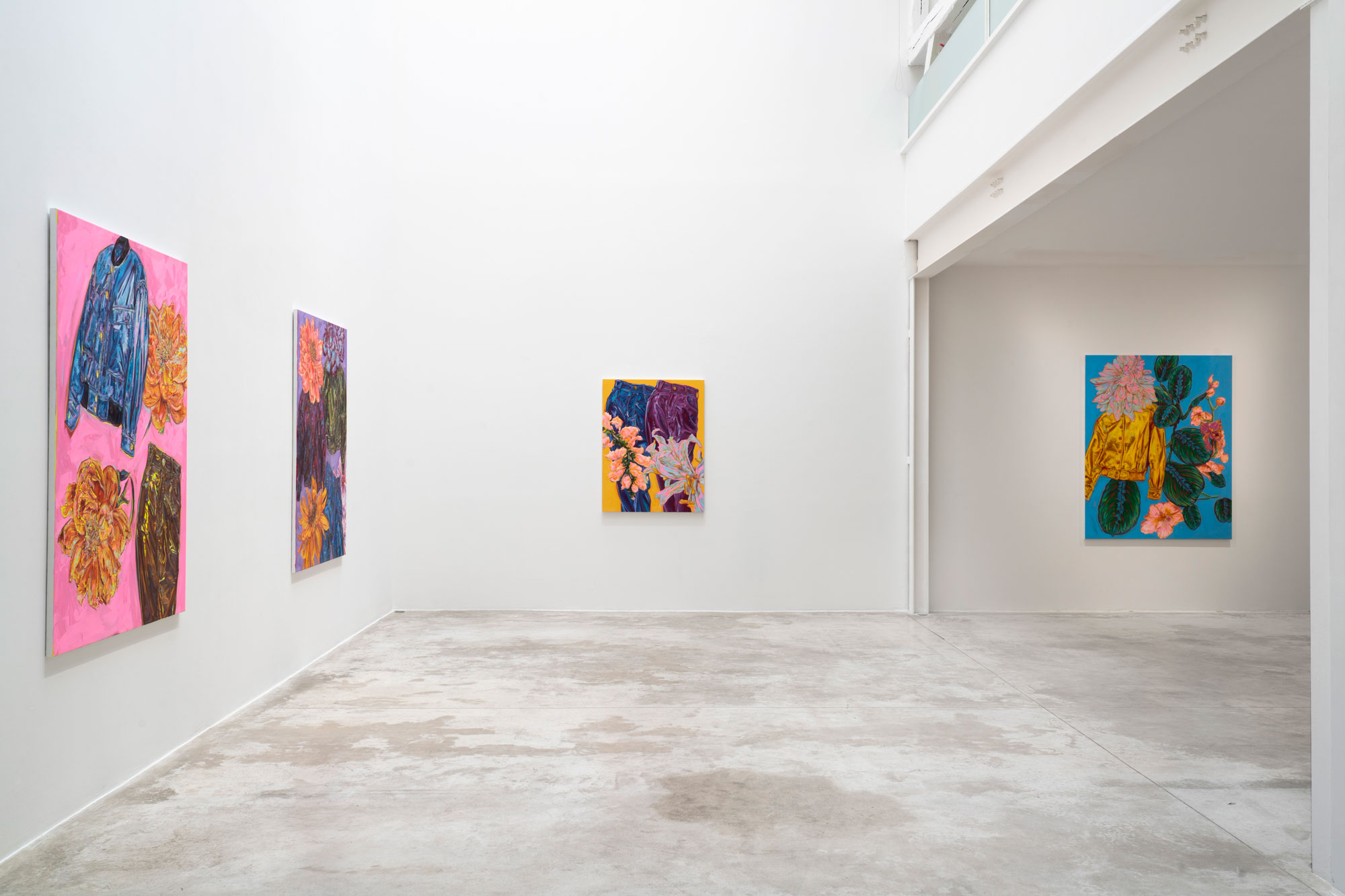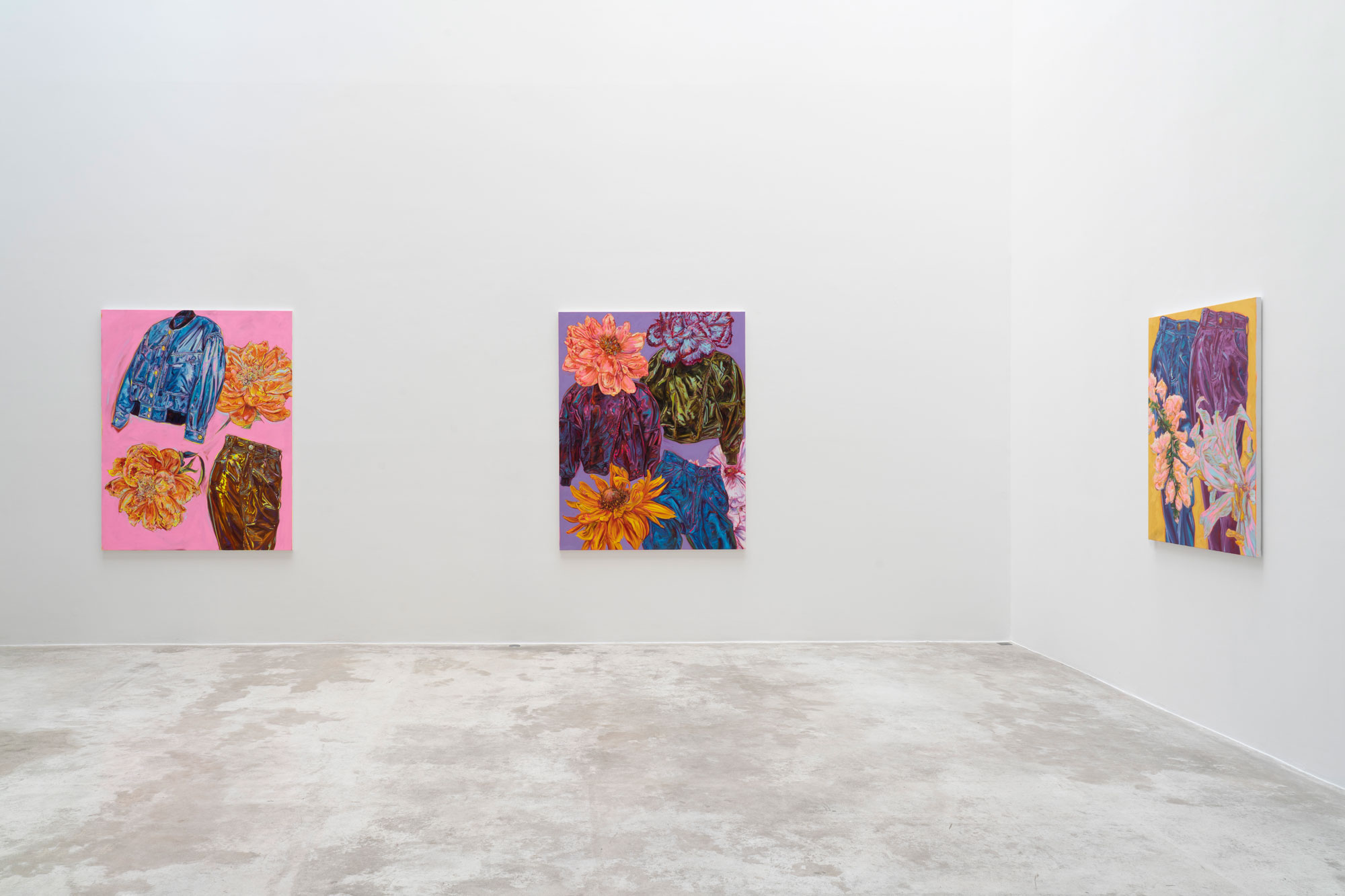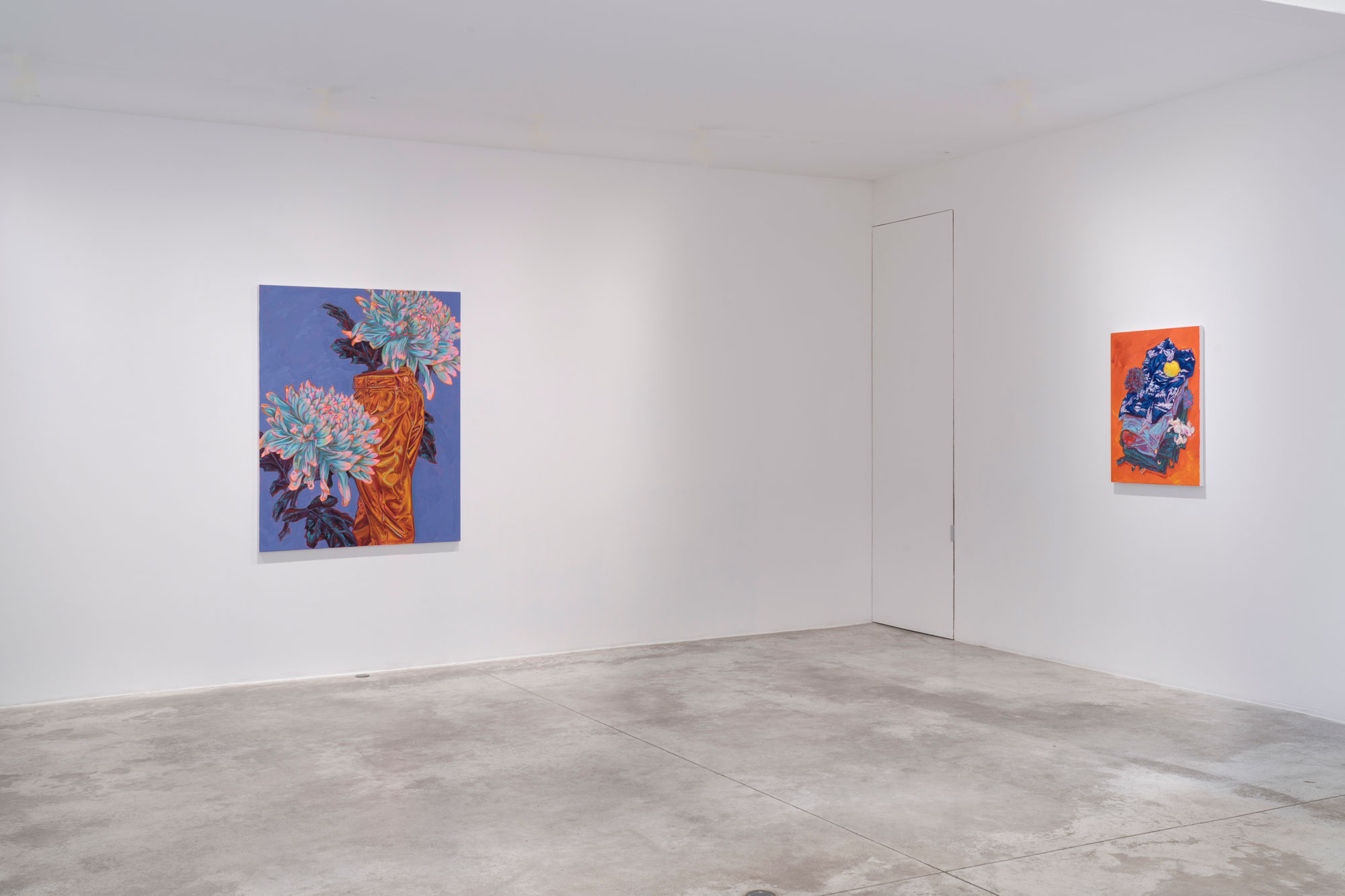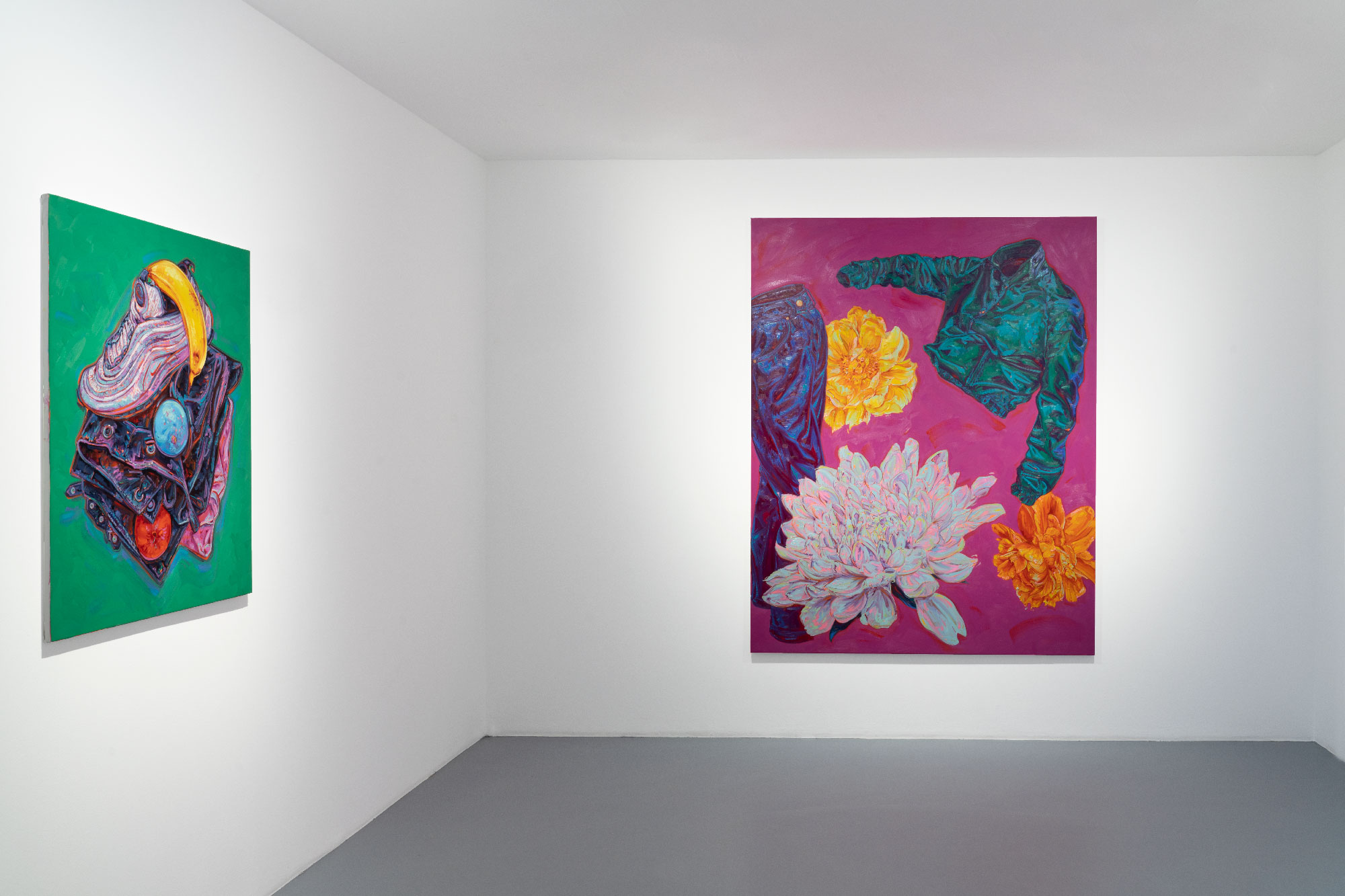Hanging in Place
Armand Jalut
September 3rd - October 8th, 2022
Michel Rein, Paris
Installation views




About
In his song “How I Love Your Paintings” (1981), Paul McMahon, a member of the Pictures Generation – that moment in the history of American art at the end of the 1970s and start of the ’80s when, coinciding with appropriationism, there was a growing awareness that simulacra could be a substitute for reality and that literal meanings might not be possible – declares his love for pictures in which the birds and fish that populate his dreams mingle with one another. A copy of McMahon’s record can be found in the vinyl collection of Armand Jalut, a modern-day heir to the Pictures Generation, who, for his part, enjoys painting flowers and leather garments, as can be seen from his most recent series.
The title of the series, Hanging in Place, is borrowed from the lyrics of a song celebrating leather and lace written by Lee Hazlewood in 1970. Jalut’s works begin with an initial gesture: the creation of a coloured background, in tones of fluorescent pink, blue, green or purple whose artificiality leaves little doubt about the pictorial spectacle to follow. Then come dahlias, gladioli and various carnations, in a range of hues with scant regard for reality, which bloom sumptuously against the coloured background. They sit alongside iridescent green leather jackets and Leatherette pants straight out of an MTV clip. Taking the form of still lifes, Jalut’s paintings represent inanimate objects, and in particular flowers, a traditional vanitas motif. A high degree of technical ability is required to produce such compositions. The brushstrokes are displayed on the surface of the canvas, allowing the stuff of the picture – the paint – to be shown off. This should come as no surprise in the work of such a seasoned observer of Manet as Jalut. Even if Jalut thereby references a genre of painting that was able, thanks to the historical moment, to turn its attention both outwards to the modern world and inwards on itself, still life nevertheless takes on a new meaning in his work: the reproduction of images. The artist’s paintings of flowers and clothes aren’t based on objects but on images from online sales sites such as Vinted (the pleats in the clothes worn by the sellers posing awkwardly and the curves of their – now ghostly – bodies can still be made out) and on photographs that he himself has taken and then cut out and retouched in Photoshop. Each element is carefully catalogued and selected for its graphic potential and for the subtleties of light ennobled by a fold, a zip or the falls of a particular silk. It’s as though the most painterly painting has been overrun by the logic of new media. A tension is set up between the vibrant pictoriality of the image and the simulacra it represents. To appreciate Armand Jalut’s painting you must imagine the painter of The Plum (1877) as a member of the Pictures Generation. A uchronia to be continued...
Marjolaine Levy, July 2022

